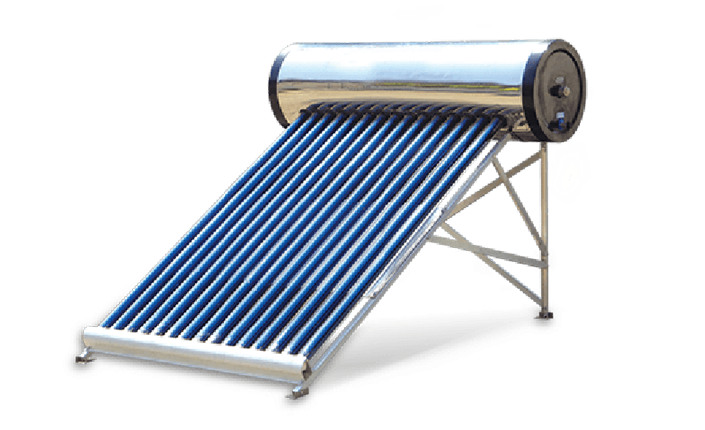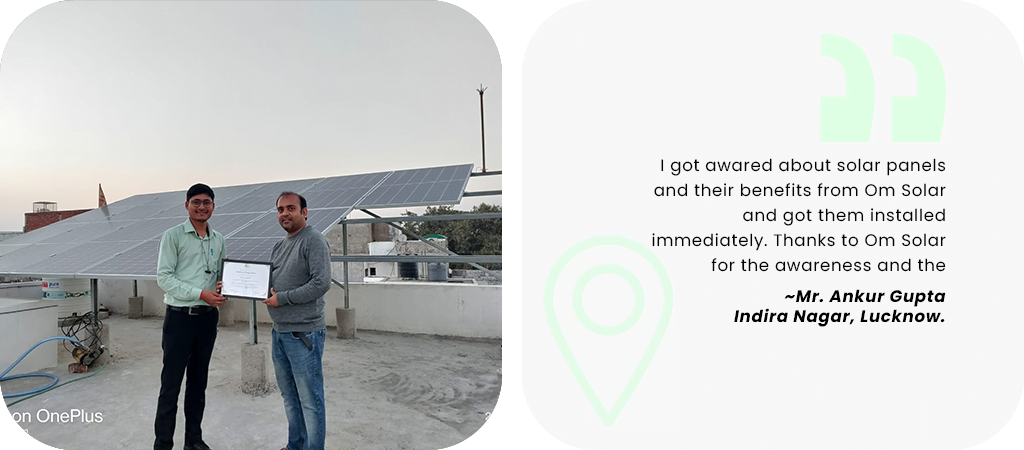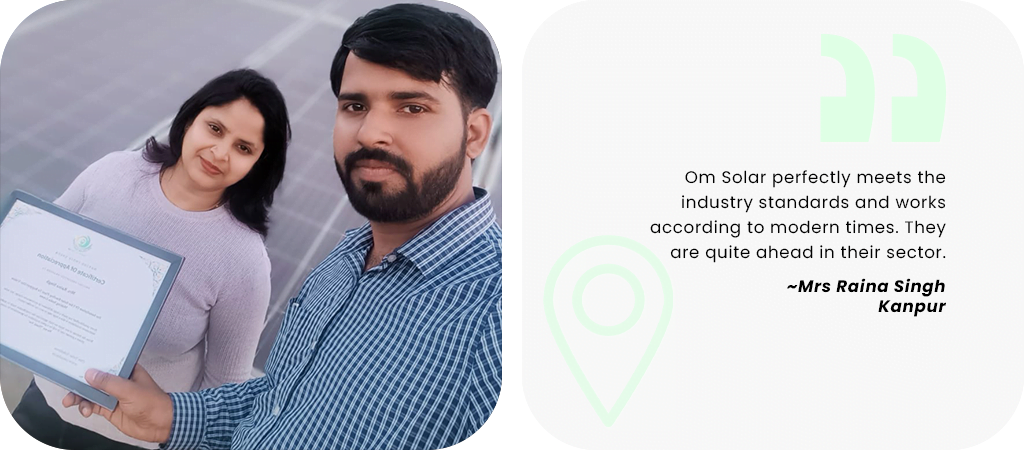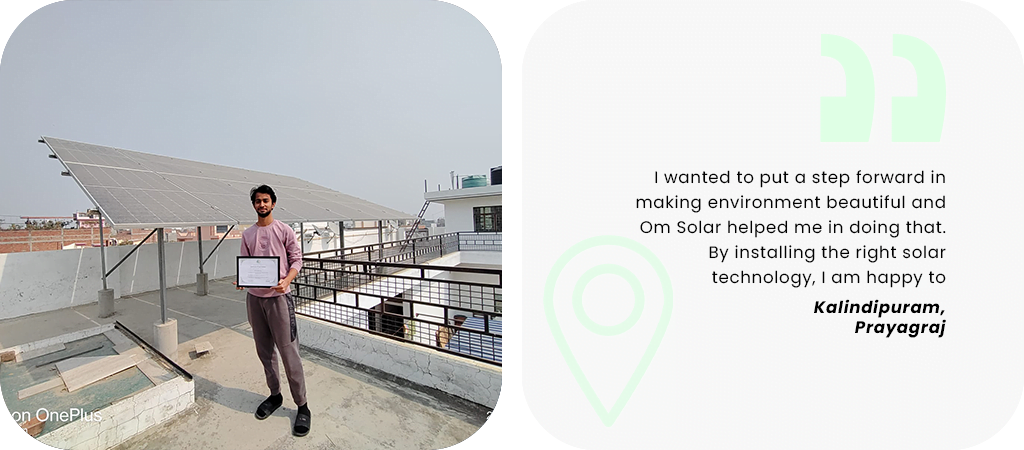- Mail Us : omsolar01@gmail.com, rituraj@omsolar.in






The Best Time To Install Solar Is Now
We Offer You The Best Of Everything Solar Panel

Modern Customized Solutions Easy to handle
Being top solar panel dealer in Lucknow, we offer cutting-edge solutions to our clients. We also provide you custom systems using the shadow analytics 3D designing tools, allowing you to only pay for what you need.

Best Quality and Price Assured That's why we're known
We offer tier-1 solar modules with a 25-year performance warranty at competitive prices. We also offer solar inverters that are 97-99% efficient, allowing you to get the most out of your solar system, which makes us one of the best solar system company in Lucknow.

On-Time Delivery With 100% Quality Guaranteed
Om solar solutions is recognized for solar product and system on-time delivery with absolutely amazing installations under the direction of expert teams

Data Monitoring System Track Everything
We frequently check solar system generation and give our customers real-time data updates; if any diagnoses are necessary, we send a solar professional to address them.

Life Time Customer Support Get Instant Replies
We offer ongoing service and support to our clients which makes us rank among the top 10 solar company in Lucknow. Please feel free to contact us at any time.
The Requisites We Look At
Approach & Design
The site will be surveyed by our team of solar experts, who will also create 3-D plans and shadow statistics. Based on the needs, our professional team will advise on the ideal system size.


Data Analyst
Our Data Monitoring App offers real-time data and solar updates so you can simply keep an eye on your solar system using a simple data analysis method.
Installation & Commission
We will visit the site to install the system in a shadow-free region to ensure higher output after the design and configuration have been approved. According to government regulations, commission the projects.

Approach & Design
The site will be surveyed by our team of solar experts, who will also create 3-D plans and shadow statistics. Based on the needs, our professional team will advise on the ideal system size.


Installation & Commission
We will visit the site to install the system in a shadow-free region to ensure higher output after the design and configuration have been approved. According to government regulations, commission the projects.
Data Analyst
Our Data Monitoring App offers real-time data and solar updates so you can simply keep an eye on your solar system using a simple data analysis method.

Why You Should Be Going With Us


Making India green
1kW solar saves 154+ trees and prevents 20+ tons of CO2 emission

Goverment's Subsidy
Government provide 30-50% solar subsidy as per Government Guideline.

Energy Independence
When you Go Solar you produce your own electricity and making a difference with others.

Reduce Electricity Bill
We're going to work with you to cut your electricity costs by 80–90%. Less money out of your pocket as a result. We also provide the option of selling extra solar energy systems to the grid.

Payback Period
In addition to offering the best installations, we also give our esteemed clients more ROI. We have a policy with a speedy return on investment of 4-5 years along with many other advantages.
Our Services

ON Grid Solar Rooftop System

Hybrid Solar System
A grid-connected, battery-powered renewable energy system known as a hybrid solar system. The system generates electricity during the day using solar panels, and the batteries store any extra energy for use at night when there is no light from the sun.

Off Grid Solar Power System

Solar Submersible Pump

Solar Atta Chakki
Solar Chakki refers to the practise of using solar energy in place of fuel or electricity when operating a mill. Along with other accessories, this includes a solar panel, a drive, earthing, and a lighting arrester.

Solar Water Heater
A solar water heating system is a device that uses the Sun’s radiation to assist heat water. This energy is entirely unrestricted. Water heating is accomplished using solar energy (sun rays). 60–80 °C is an easy temperature range for water to be heated.
Our Solar Panel Installation Services






Smart And Simple Approach

24*7
Support

Environment Friendly

Absolute Modern Designs

Reduced Electricity Cost

High Returns on Investment
Our Success Stories








Our Implementation Partners!
We’ve proudly gathered with these government approved organizations and have product availability among all the cities in Uttar Pradesh.







Frequently Asked Question
The On-grid solar system is connected to the user’s utility system, while, Off-grid solar system is the opposite. The on-grid solar system is best for domestic uses as they are directly connected to appliances. In contrast, Off-grid solar systems are connected to batteries so that their energy is stored and used later.
Hybrid solar systems have a grid to supply and a solar battery to store both. To know your ideal solar panel, contact Om Solar.
Secondly, mark your property area; accordingly, you can calculate Solar Power requirements. You can contact Om Solar experts for proper assessment.
Looking for a professional is the best option.

